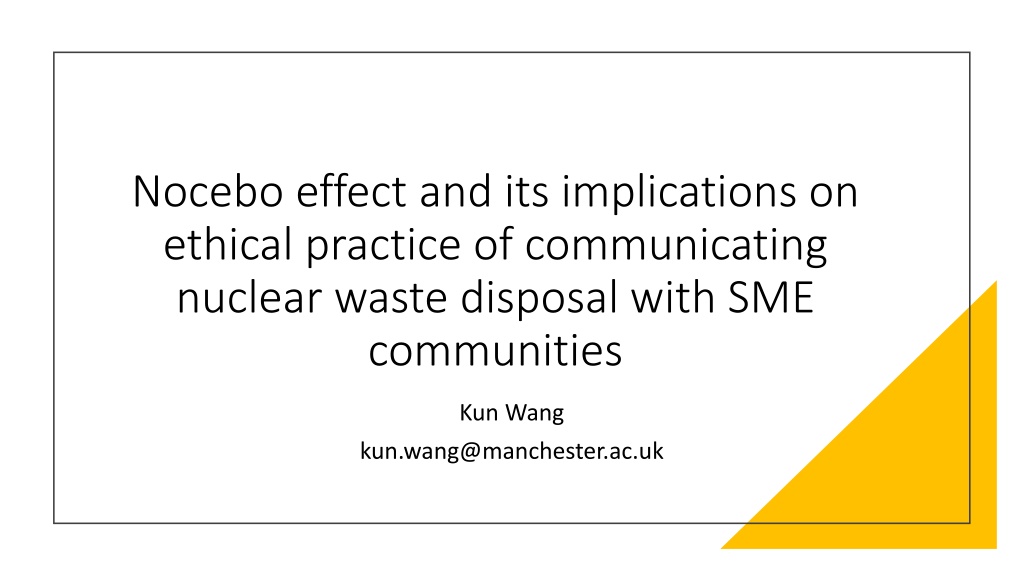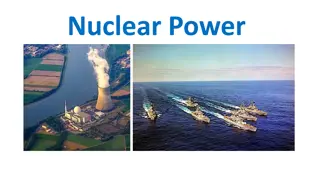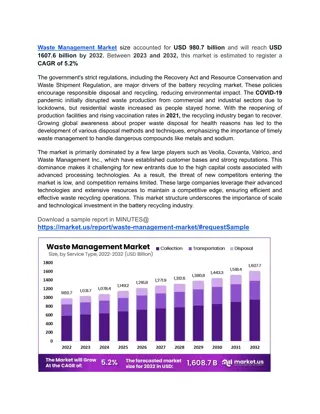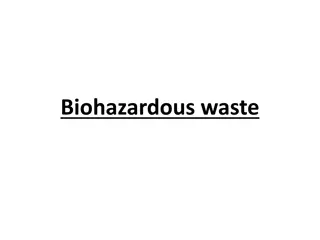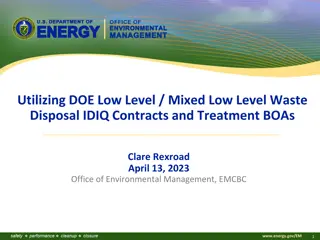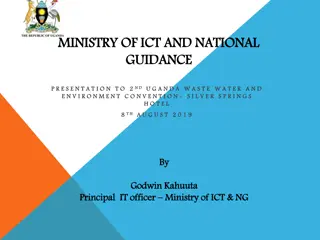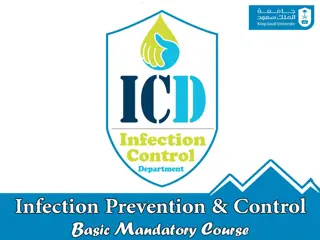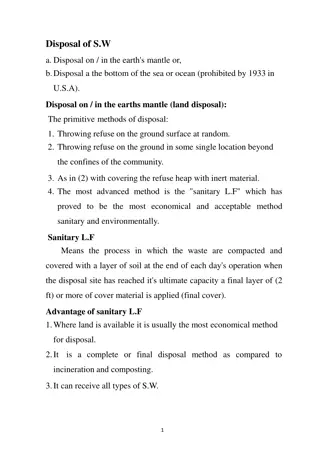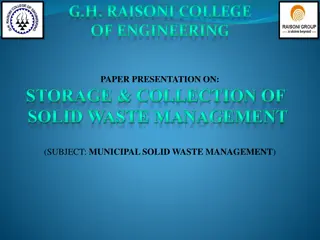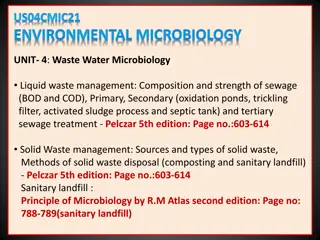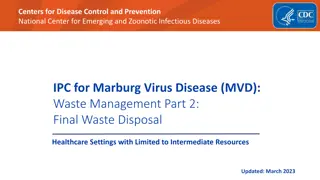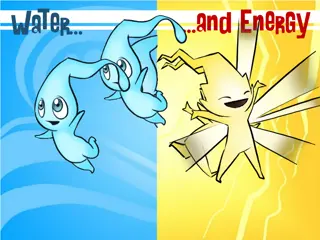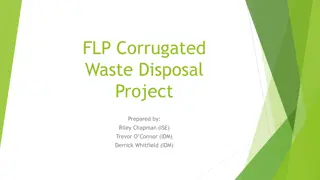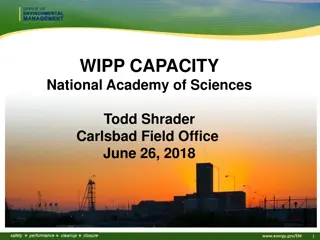Understanding the Nocebo Effect in Communicating Nuclear Waste Disposal with SME Communities
This research explores the impact of the nocebo effect on ethical practices when communicating nuclear waste disposal to small and medium-sized enterprise (SME) communities. It aims to evaluate and reduce potential fears caused by misinformation on radioactive waste management. The study delves into how information types influence community emotions and reactions, aiming to develop a framework for ethical communication to mitigate these fears.
Download Presentation

Please find below an Image/Link to download the presentation.
The content on the website is provided AS IS for your information and personal use only. It may not be sold, licensed, or shared on other websites without obtaining consent from the author. Download presentation by click this link. If you encounter any issues during the download, it is possible that the publisher has removed the file from their server.
E N D
Presentation Transcript
Nocebo effect and its implications on ethical practice of communicating nuclear waste disposal with SME communities Kun Wang kun.wang@manchester.ac.uk
Outline RESEARCH MOTIVATION AIM AND OBJECTIVES DEVELOPMENT OVERVIEW OF THE RELEVANT LITERATURE PROPOSED FUTURE RESEARCH METHODS
Nocebo phenomenon: Fears of side effects Nocebo effects: are adverse effects arise due to factors such as what patient expects, the patient-clinician relationship and other contextual factors (Evers et al, 2021).
Fears and public behaviours: Technology and policy is a double-edged sword that can carry people s expectations but at the same time it can also create fear. People are fearful of things they don't understand, which causes a rejection of new technologies that could lead to cost. For example, a popular theory has linked 5G to the spread of COVID-19, leading to misinformation and the burning of 5G towers in the United Kingdom (Ahmed, 2020). BBC (2020) Fear is a frequently occurring attitude that requires considerations by nuclear waste faculties (Greenberg and Truelove, 2011; Perko and Martell, 2021).
Aim and Objectives: Aim: to evaluate and reduce the possibilities of causing fears based current information of nuclear waste management delivered to a community. To categorise the information types related to radioactive waste available to a certain type of community To investigate the effects of the information on the emotions and reactions of the local communities representatives To develop a framework to mitigate the fears based on the community context To propose information circulation and ethical communication framework
Overview of the literature: Fear of nuclear has long been discussed and has been considered as a social constructed phenomenon, hence has been discussed with subjective perspectives and factors can impact on the subjective perspectives (Yli-Kauhaluoma & H nninen, 2014). Subjective perceptions of risk: Q methodology; survey (e.g. Cho, 2018; Roh & Lee, 2018; Sj berg, 2003) what and to what extend the public think about risk Impact factors: Survey; case studies; social media analysis (e.g Lehtonen, Kojo, et al., 2021; Litmanen, 2016; Qiu et al., 2020) - culture; personal background; how information is presented (framing)
Communication and stakeholder involvement is important for effective, democratic, ethical, and transparent decisions. Effective public communication: Roles and involvement; Media; Framing strategy (e.g Bowrey, 2020; Perko & Martell, 2021; Rodrigues & Vicente, 2021) Though the trust can be enhanced by public communication, acceptance of risk cannot be significantly changed (Qi et al., 2020) Risk communication should not only be effective, but also ethical, which requires taking values into consideration and taking decisions in a democratic way (Perkoa and Martellb, 2021)
Relevant ethical issues concerning placebo and nocebo effects: To tell but not to harm Even though personal framing is inevitable, patients need to be fully informed about risks and side effects of treatments as well as the possibility of treatment failures) Disclosures can be made carefully in a manner that does not increase anxiety and simultaneously preventing and reducing nocebo effects (Evers et al., 2021). Contextualized informed consent: tailoring communication by understanding the needs of patient (Wells & Kaptchuk, 2012)
Research methods: Case study: Small-to-Medium Enterprises (SMEs): balance of life and economic concerns business leaders also residents, local labour force and market Methods rationale: To build cause-and-effect model of information regarding to nuclear wasted distribute to the case communities and fears Understanding the mechanism of nocebo is important for preparing communication (Evers et al., 2021) To review the literature of clinical practice for ethical information crafting methods; To collect concerns and requirements for information in the case context; To test craft information and add fear mitigators for current communication strategy Contextualised inform (Wells & Kaptchuk, 2012)
https://ojs.stanford.edu/ojs/index.php/intersect/article/view/1752 Bowrey, B. (2020). Nuclear Waste and Society : A Historiographic Review and Analysis of Two Approaches. Intersect, 14(1), 1 16. https://doi.org/10.1016/J.NET.2018.07.002 Cho, S. K. (2018). Development of the nuclear safety trust indicator. Nuclear Engineering and Technology, 50(7), 1168 1172. Colagiuri, B., Crum, A. J., Finniss, D. G., Geers, A. L., Howick, J., Klinger, R., Meeuwis, S. H., Meissner, K., Kirsch, I. (2021). What Should Clinicians Tell Patients about Placebo and Nocebo Effects? Practical Considerations Based on Expert Consensus. Psychotherapy and Psychosomatics, 90(1), 49 56. https://doi.org/10.1159/000510738 Evers, A. W. M., Colloca, L., Blease, C., Gaab, J., Jensen, K. B., Atlas, L. Y., Beedie, C. J., Benedetti, F., Bingel, U., B chel, C., Bussemaker, M., illustration via three forerunner countries in nuclear waste management. Journal of Risk Research, 0(0), 1 17. https://doi.org/10.1080/13669877.2021.1957987 Lehtonen, M., Kajo, M., Kari, M., Jartti, T., & Litmanen, T. (2021). Trust, mistrust and distrust as blind spots of Social Licence to Operate: waste management in Finland, France, and Sweden. Energy Research & Social Science, 61, 101353. https://doi.org/10.1016/J.ERSS.2019.101353 Lehtonen, M., Kojo, M., Jartti, T., Litmanen, T., & Kari, M. (2020). The roles of the state and social licence to operate? Lessons from nuclear leading newspapers on nuclear waste disposal in Finland and France. Risk, Hazards and Crisis in Public Policy, 12(2), 130 157. https://doi.org/10.1002/rhc3.12210 Lehtonen, M., Kojo, M., Kari, M., & Litmanen, T. (2021). Healthy mistrust or complacent confidence? Civic vigilance in the reporting by Thank you & reference list Finland: Https://Doi.Org/10.1177/0734242X9901700307, 17(3), 212 219. https://doi.org/10.1177/0734242X9901700307 Litmanen, T. (2016). Cultural approach to the perception of risk: analysing concern about the siting of a high-level nuclear waste facility in Microbiology of Nuclear Waste Disposal, 291 320. https://doi.org/10.1016/B978-0-12-818695-4.00013-7 Perko, T., & Martell, M. (2021). Communication and stakeholder engagement of microbiology in radioactive waste disposal. The 111655. https://doi.org/10.1016/J.ENPOL.2020.111655 Qi, W. H., Qi, M. L., & Ji, Y. M. (2020). The effect path of public communication on public acceptance of nuclear energy. Energy Policy, 144, China: A case study. Https://Doi.Org/10.1080/13669877.2020.1749116, 24(2), 167 182. https://doi.org/10.1080/13669877.2020.1749116 Qiu, H., Weng, S., & Wu, M. S. (2020). The mediation of news framing between public trust and nuclear risk reactions in post-Fukushima Rodrigues1, R. B., & Vicente2, R. (n.d.). New Tools of Public Communication on Radioactive Waste Disposal Projects. 122, 727 735. https://doi.org/10.1016/J.ENPOL.2018.05.018 Roh, S., & Lee, J. W. (2018). Differentiated effects of risk perception dimensions on nuclear power acceptance in South Korea. Energy Policy, https://doi.org/10.1111/1539-6924.00352 Sj berg, L. (2003). Attitudes and risk perceptions of stakeholders in a nuclear waste siting issue. Risk Analysis, 23(4), 739 749. Informed Consent. American Journal of Bioethics, 12(3), 22 29. https://doi.org/10.1080/15265161.2011.652798 Wells, R. E., & Kaptchuk, T. J. (2012). To Tell the Truth, the Whole Truth, May Do Patients Harm: The Problem of the Nocebo Effect for Public Understanding of Science, 23(3), 316 330. https://doi.org/10.1177/0963662513503773 Yli-Kauhaluoma, S., & H nninen, H. (2014). Tale taming radioactive fears: Linking nuclear waste disposal to the continuum of the good.
